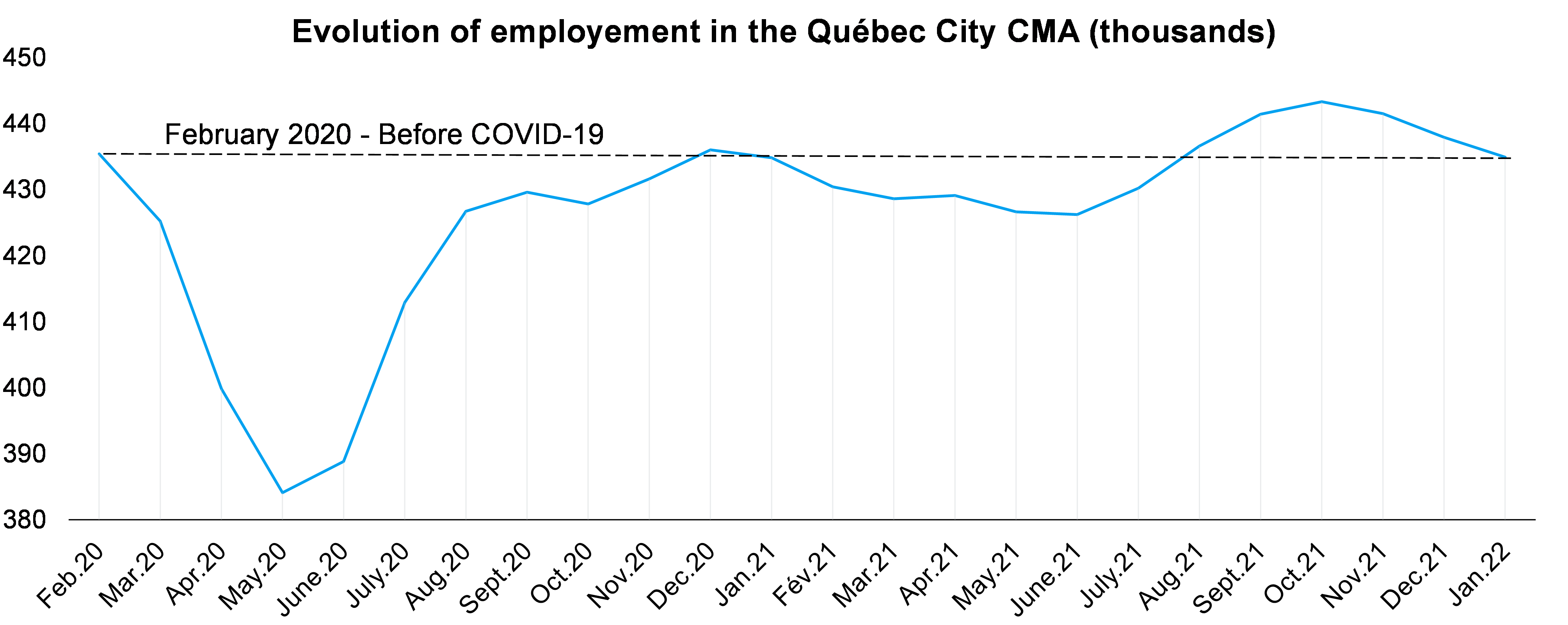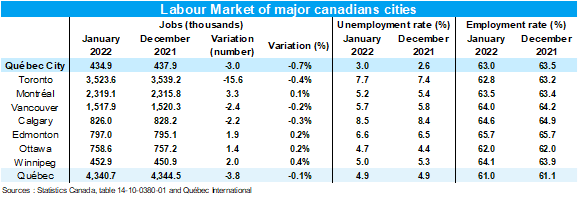Highlights
- The region registered a third consecutive decrease in the number of people employed (-3,000), with a drop of 0.7%. There are now 434,900 jobs in the region, comparable to the pre-pandemic level observed in February 2020 (435,400).
- Statistics Canada estimated that there were 448,400 people in the labour force in January, 1,200 fewer than the month before (-0.3%). Moreover, the participation rate and employment rate dropped to 65% and 63%, respectively.
- In the province of Quebec, comparable data shows that employment decreased by 3,800 people (-0.1%), while the unemployment rate reached 4.9%.
Charts

Source: Statistics Canada. Table 14-10-0380-01.

i. The available data for the Québec City census metropolitan area (CMA) was given special statistical treatment (three-month moving average) due to the small sample size, which has the effect of mitigating the large fluctuations in the data. Thus, the data collected in November and December influenced the estimations published for January. Please also note that we use comparable data for the province of Quebec and the other CMAs in this document.
ii. Note that Statistics Canada reviewed its Labour Force Survey (LFS) in January. The changes do not have a significant impact on the observed trends.
Commentary
Statistics Canada’s Labour Force Survey (LFS) data for January shows the labour market conditions during the week of January 9 to 15. This data is the first to reflect the effects of the tightening of health restrictions following the spread of the Omicron variant at the end of December.
After ending the year with the lowest unemployment rate in Canada, the region registered a slight increase in January, a first in five months. Nevertheless, this rate remains historically low, with Québec City’s labour market characterized by labour scarcity. Note that the unemployment rate quickly tightened after reaching a peak at the beginning of the pandemic (11.9% in May 2020).
As was the case in 2021, a deterioration of the labour market was expected in the beginning of 2022 due to the tightening of public health measures. All seems to indicate that once again some industries like accommodation and food services are more affected than others. However, the impact on employment will likely be lower than last year. In January 2022, the number of people employed in the region was back to a similar level (99.9%) to before the pandemic (February 2020). For that period, Québec City ranked 7th among the 8 major Canadian CMAs, behind Winnipeg (101.1%) and before Ottawa (98.3%).
Today’s figures show that the health measures will have an effect on employment in the beginning of 2022, yet in the long term, the labour force will be more determining. In January, the labour force registered a decrease for the fourth month in a row.
Émile Émond
Economist
Québec International




